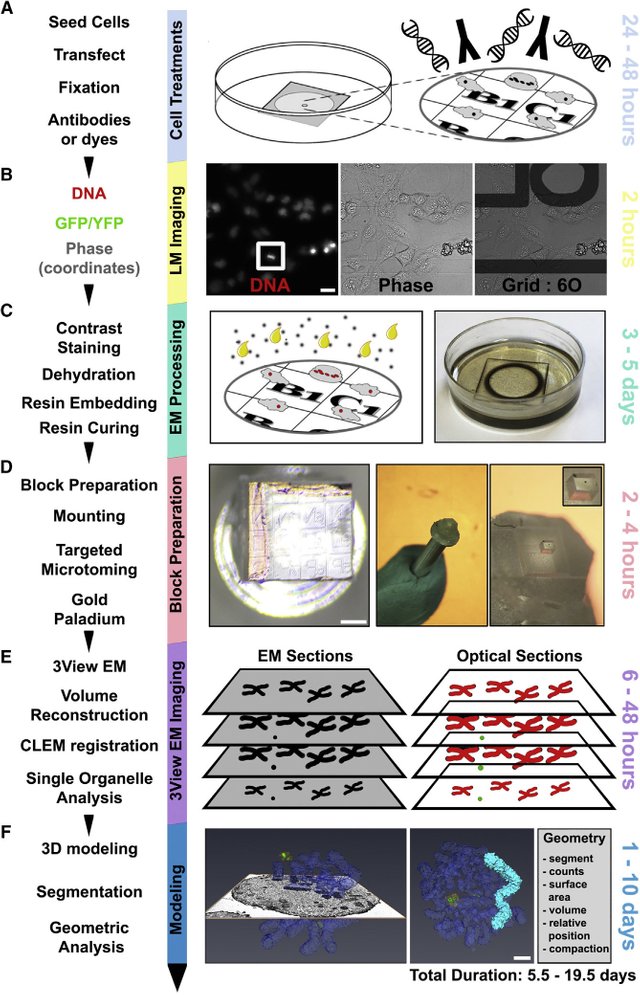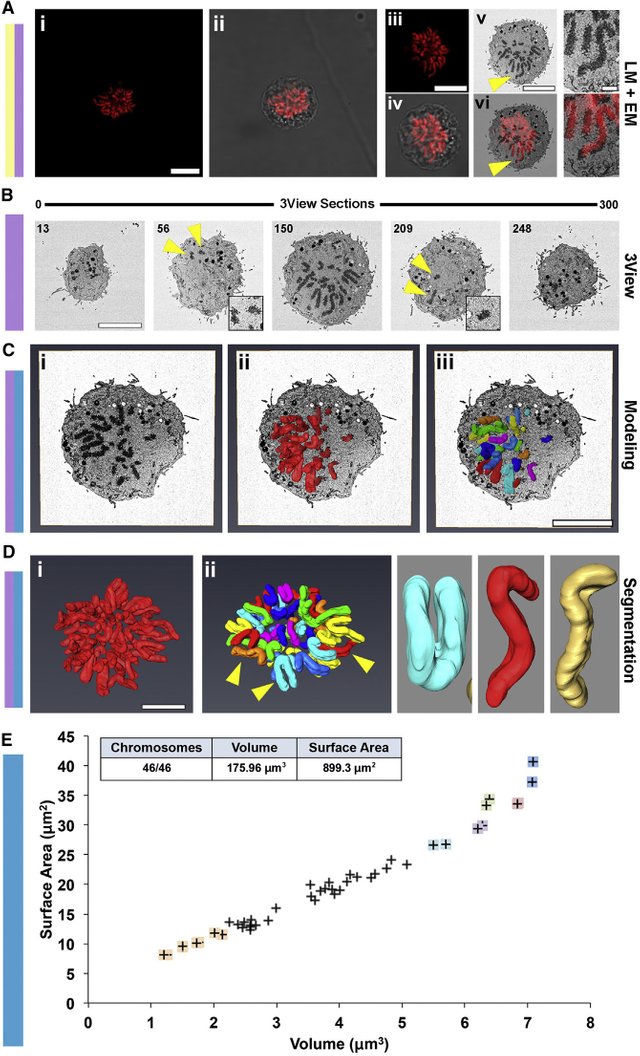DNA is only half the volume of the chromosomes. Everything else - an unknown shell functionality

Three-dimensional model of the 4 th human chromosome
In school we were taught that in the nucleus of each cell contains threadlike structures called chromosomes, which are stored in the genes - units of heredity located in a linear fashion. Genes encoded in DNA macromolecule composition. But all is not as easy as it seems.
Since its opening in 1882 and the chromosomes underwent thorough scrutiny, including by means of optical and electron microscopes. Surprisingly, scientists still do not manage to clearly understand how organized their structure.
For decades, scientists have concentrated their efforts on the research, mostly chromatin. This basic functional substance chromosome representing a set of DNA, RNA and proteins. It occurs in chromatin realization of genetic information and DNA repair and replication.
One of the biggest mysteries - how the packaging (folding) chromatin. For a long time we assumed that the packing is random, but recently there have been other theories. Some scholars suggest that the package takes place along the lines of the polymer melt. Some argue that the chromosomes are interconnected through a chain of packaging processes, by helical winding around the nucleosome to 30 nm solenoidal fiber and then to a larger spiral. In the end, there is a third class of theories that suggest that horomosomy consist of chromatin loops, pent negistonnymi proteins.
The last of these chromosome structure models have recently received additional confirmation. In 2013, advanced microscopy techniques have clearly shown how the linear matrix is formed from chromatin loops (see Ref. Natalya Naumova from the University of Massachusetts and his colleagues, published in the journal Science) in the cell nucleus. The video shows more than how the self-organization of chromosomes.
The organization of mitotic chromosomes (accompanying material to the article Natalya Naumova and colleagues 2013)
However, all these studies chromatin by and large ignored the thin surface layer, which is found in the chromosomes of more classical method of microscopy in 1968. This peripheral layer investigated is weak, and its composition and structure remained virtually unknown. By default, it was assumed that this is just a kind of amorphous mass, which adheres to the chromosomes.
The problem is that we can study the chromosome only in certain circumstances, so we do not have a clear idea of what they look like in reality.
The group of British scientists from the University of Edinburgh for several years exploring the outer covering of the chromosomes. Several years ago, they proved that the assembly of the outer part of the chromosome necessarily requires the Ki-67 protein. Researchers have suggested that the coating is made with the chromosome of the protein.
A new study conducted by a group of scientists, contains the results of the chromosome structure of 3D-modeling, as well as the description of the shell. According to scientists, this material is up to 47% of the volume of the chromosomes. At the same time the functionality of the material still remains unclear.
Presumably, the individual chromosomes through shell isolated from each other during the key process of cell division. Probably, this material also helps to avoid errors during cell division. It is known that with such erroneous division linked certain types of cancers and congenital diseases of man.
For the first time in the history of science, scientists have made detailed 3D-models of all 46 human chromosomes. This was accomplished through the use of a new method of 3-D-CLEM, which combines optical and electron microscopy, and will remove the chromosomes with an unprecedented resolution.

A schematic description of all steps of the process 3-D-CLEM, which takes between 5.5 to 19.5 days
As a result, researchers have carried out simulation length, width, surface area, volume and density of packing of DNA in chromosomes.

The imaging technique we have developed to study chromosomes is truly groundbreaking. Defining the structure of all 46 human chromosomes for the first time has forced us to reconsider the idea that they are composed almost exclusively of chromatin, an assumption that has gone largely unchallenged for almost 100 years. - Dr Daniel BoothSchool of Biological Sciences
Actually chromatin it is only from 53% to 70% in the composition of chromosomes. Everything else - this is a shell that was much thicker than expected.
Understanding the structure of chromosomes and membranes, as well as the fission process will help study and prevent the development of certain diseases.
Scientific work published November 10, 2016 in the journal Molecular Cell (doi: 10.1016 / j.molcel.2016.10.009, pdf).
Referenced Materials:
- http://emboj.embopress.org/content/31/7/1644
- http://jcb.rupress.org/content/162/1/23
- http://jcb.rupress.org/content/96/1/84
- http://science.sciencemag.org/content/342/6161/948.article-info
- http://link.springer.com/article/10.1007%2FBF02327721
- http://www.cell.com/molecular-cell/abstract/S1097-2765(16)30632-3
- http://www.ed.ac.uk/news/2016/only-half-of-a-chromosome-is-dna-study-finds
This post has been ranked within the top 50 most undervalued posts in the first half of Nov 23. We estimate that this post is undervalued by $5.90 as compared to a scenario in which every voter had an equal say.
See the full rankings and details in The Daily Tribune: Nov 23 - Part I. You can also read about some of our methodology, data analysis and technical details in our initial post.
If you are the author and would prefer not to receive these comments, simply reply "Stop" to this comment.